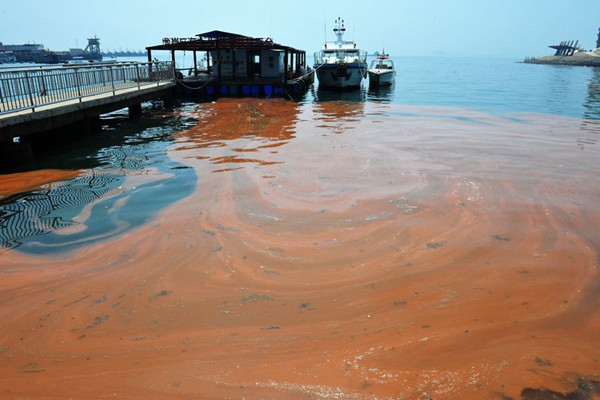Red tide blamed for Hainan fish deaths
 0 Comment(s)
0 Comment(s) Print
Print E-mail Xinhua, February 11, 2014
E-mail Xinhua, February 11, 2014
Officials in south China's island province of Hainan on Tuesday blamed red tide, a toxic algal bloom, for the recent mass deaths of fish and shrimp in sea areas west of the land mass.
|
|
|
Red tide is a common name for a phenomenon known as an algal bloom when it is caused by a few species of dinoflagellates and the bloom takes on a red or brown color. [File photo] |
According to a statement from the provincial food security office, experts at the Ocean Monitoring and Forecasting Center (OMFC) found that Phaeocystis globosa Scherffel algae caused the red tide bloom, which killed marine animals in sea areas near Danzhou, Yangpu and Changjiang.
Zhou Tao, director of the OMFC, said that Phaeocystis globosa Scheffel is a harmful marine microalgal species and its bloom took place in spring in waters near western parts of Hainan.
Zhou said higher temperatures this winter triggered the bloom. Although the observation found the red tide is not serious, tighter monitoring is needed, he added.
Residents have reported discovering dead fish, shrimp and shellfish since Feb. 3.
Local marine fishery authorities said they have kept gathering information and monitoring the red tide.
Workers have collected and safely disposed of hundreds of kg of dead fish and shrimp, and authorities said these dead marine animals will not enter markets.
Follow China.org.cn on Twitter and on Facebook to join the conversation. You can use the hashtag #redtide to share your thoughts on this story.







Go to Forum >>0 Comment(s)